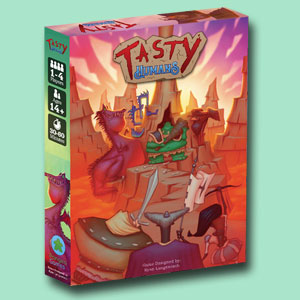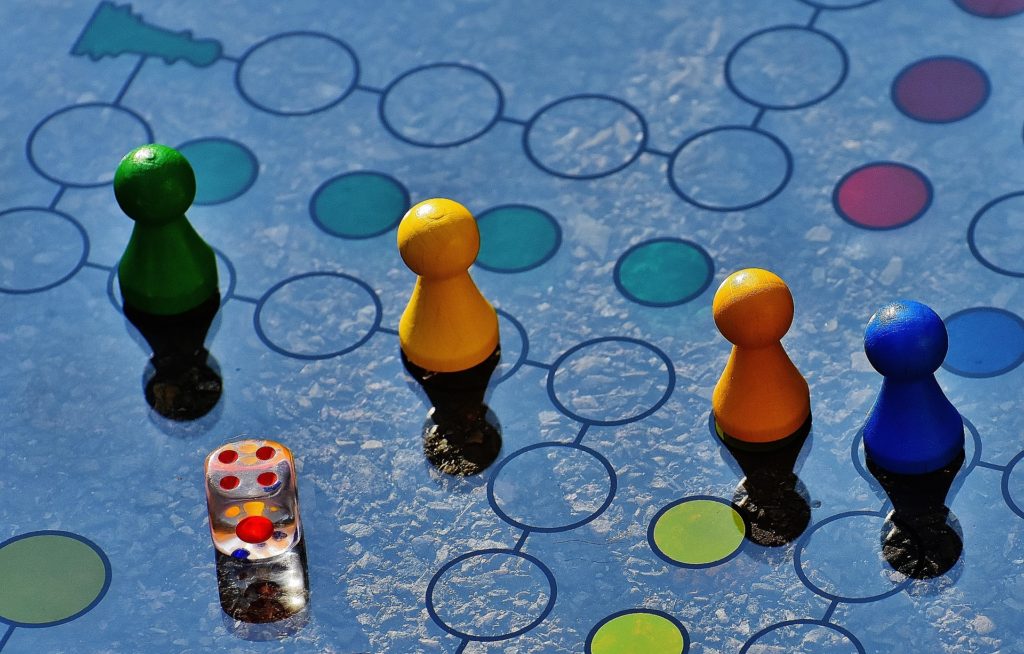Board Game Development – Wait Like a Champ by Using Downtime Wisely
Dev Diary posts are made to teach game development through specific examples from my latest project: Highways & Byways.
Just here for Highways & Byways updates? Click here – it will take you right to the updates at the bottom of the page.
Last week in the Dev Diary, I talked about how board game development is a long, ongoing process with a lot of different stages. Every once in a while, you’ll find yourself waiting on something in order to continue. Common situations include:
- Waiting on the manufacturer to print a sample run of your game so you can complete product testing or send copies to reviewers.
- Waiting 4-8 weeks for reviewers to cover your game, while praying that their feedback is positive.
- Waiting for Kickstarter to approve your campaign.
Looking for more resources to help you on your board game design journey?
Here you go: no email required!
Like this writing style?
Check out my latest blog on marketing here.
Waiting is a big part of self-publishing a board game, as well as entrepreneurship in general. I know it’s not sexy. Nobody grows up and dreams of waiting days, weeks, and months to get a dream off the ground. Yet it’s important to accept its inevitability and have a mindset that allows you to make the best use of your time.

In my case, I’m waiting on James to finish up art for his last project. Then I’ll be waiting for him to rapid prototype the Highways & Byways board. I’ve just about exhausted my close circle of family and friends as far as first-time play-testing is concerned. With the amount of visual data being used in the game, it will make it much easier to get useful feedback with a proper board drafted. In short, I need a prototype board to do efficient play-testing. It’s going to take a little while.
So what does one do with all this extra time? Remember that if you are making a game and publishing it on your own, you’re running a business. Businesses need more than just a product or service to survive. When you are not able to work on game development, there are several other things you can work on.
Artwork: If it’s really early in your project’s timeline and you find yourself stuck for one reason or another, you can always start looking for artists. You can start making lists or curating special feeds of artists you like on Instagram and DeviantArt. You can start jotting down your art direction thoughts, even if you’re not ready to write an art spec document yet.
Production: Once you have a basic idea of what’s going to go into your game physically, you can start asking manufacturers for quotes. Most manufacturers will give you a free quote. I suggest asking for a quote at the MOQ (minimum order quantity), MOQ x 2, and MOQ x 10. That gives you a wide range of figures that will let you figure out which company is best depending on your financial situation later on.
Where do you find board game manufacturers? It’s not so hard. You can Google “board game printers” or “board game manufacturers” and start finding them that way. You can also peruse Reddit and Board Game Geek threads, since they tend to be gold mines of information on this sort of topic.
Reviews: Start looking on Twitter or Board Game Geek for board game reviewers. Make lists. Get to know them. Learn their styles. When it’s time to send your game out to reviewers, this gives you the advantage of sending your game to people who are both reliable and fans of the type of game you’re making.
Kickstarter: It’s never too early to start a draft Kickstarter page. It’s also a great idea to start backing campaigns for $1 just so you can watch their newsletters. Plus if you back 20-30 campaigns, people will take you a lot more seriously when you do intend to Kickstart your game. Nothing says “red flag” on Kickstarter like a creator who hasn’t backed anyone.
Fulfillment: If you’re an American, read up on my first and second guides about shipping. Order some free USPS mailers to your home just to get a sense of their size. Ask Snakes & Lattes or Games Quest to send you free materials on international board game fulfillment pricing.
Preorders & Sales: Figure out how Celery and Amazon work before you need them. Their set-up is more complicated than you might think, so you need to plan ahead.
Marketing: If all else fails, it’s always a good idea to get more email subscriptions, social media followers, likes, subscribes…whatever your most valuable metric is. You can never have too many people ready ahead of time if you plan on Kickstarting your game. Have lots and lots of genuine, heartfelt, one-on-one conversations over several months and you’d be amazed what you can make happen.
So to bring it all together, what does my use of downtime during Highways & Byways look like? What have I done this week to practice what I preach?
Well, I’m about to launch a new blog series called Start to Finish: Publish and Sell Your First Board Game on Monday. I’m also making a brand new companion email newsletter for the series as well, which you should totally sign up for.
I’ve been growing my game developer Discord by seeking out people on Twitter who seem cool and inviting them personally. At the same time, I’ve been growing that email newsletter list like crazy. Meanwhile, I’ve been cleaning up my social media channels so I can more clearly see what’s relevant. I’ve been experimenting with advertisements. I’ve had lots and lots of one-on-one conversations in the downtime.
Part of the fun of self-publishing a game is that you get to take on a variety of tasks. You never get mired too much into any one thing. Much of your success will depend upon waiting like a champ and making great use of downtime.
Most Important Highways & Byways Updates
- I play-tested version Highway 3 with components.
- The components I’m testing with are clearly not going to work.
- I’m waiting on some preliminary art before getting much further into play-testing.
- I’m launching a new series on the blog, growing the newsletter, and growing the Discord community.







